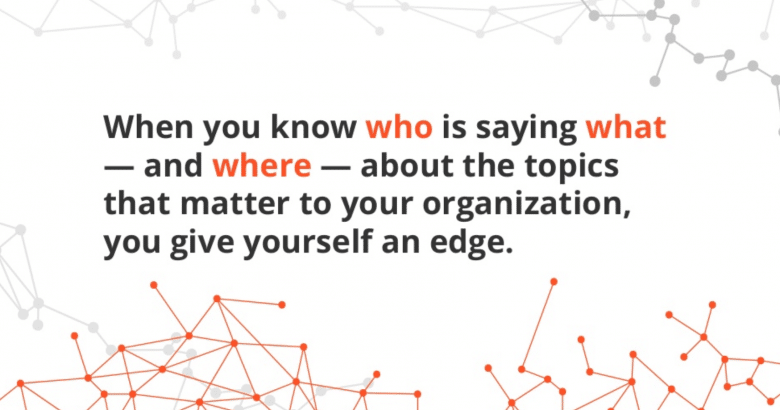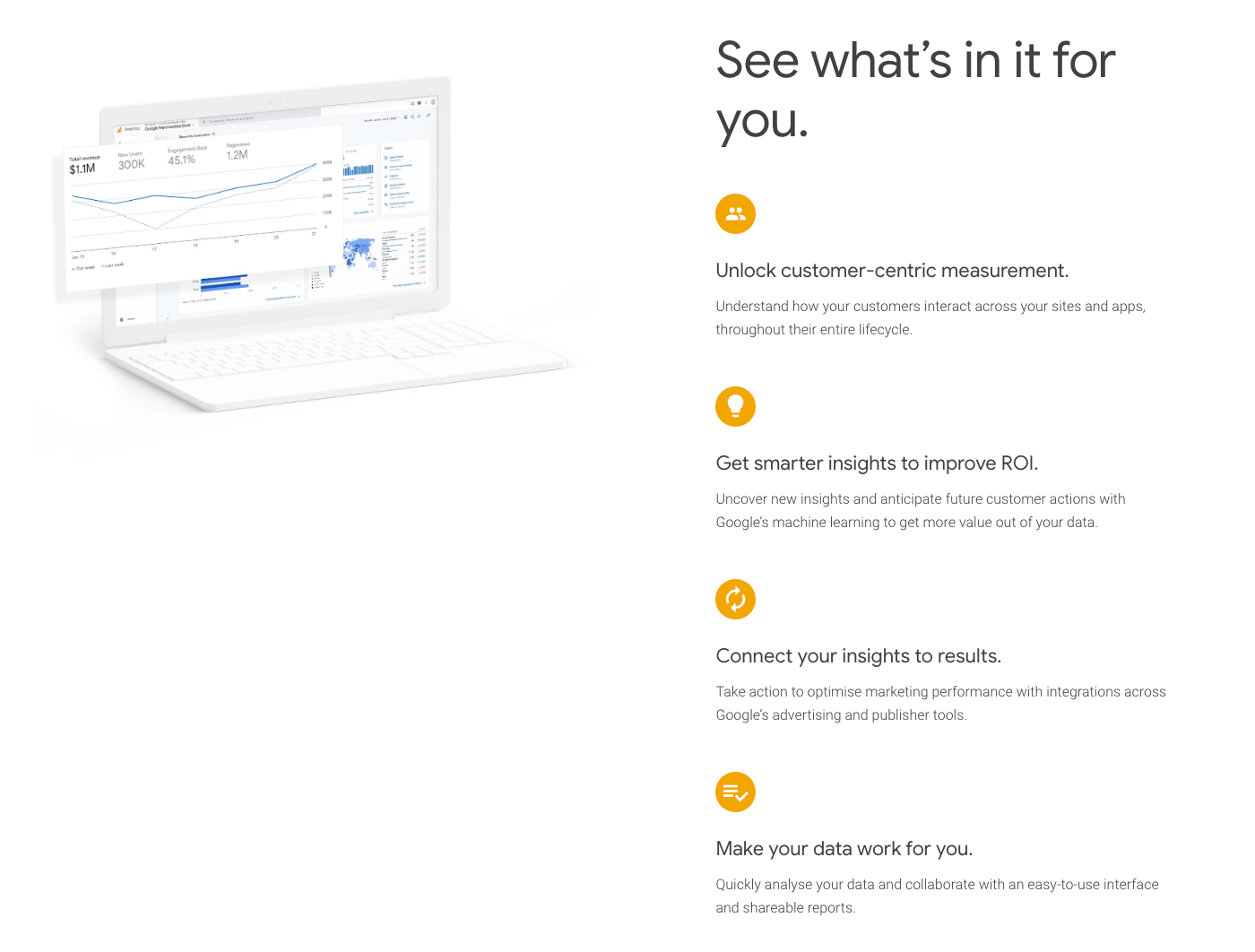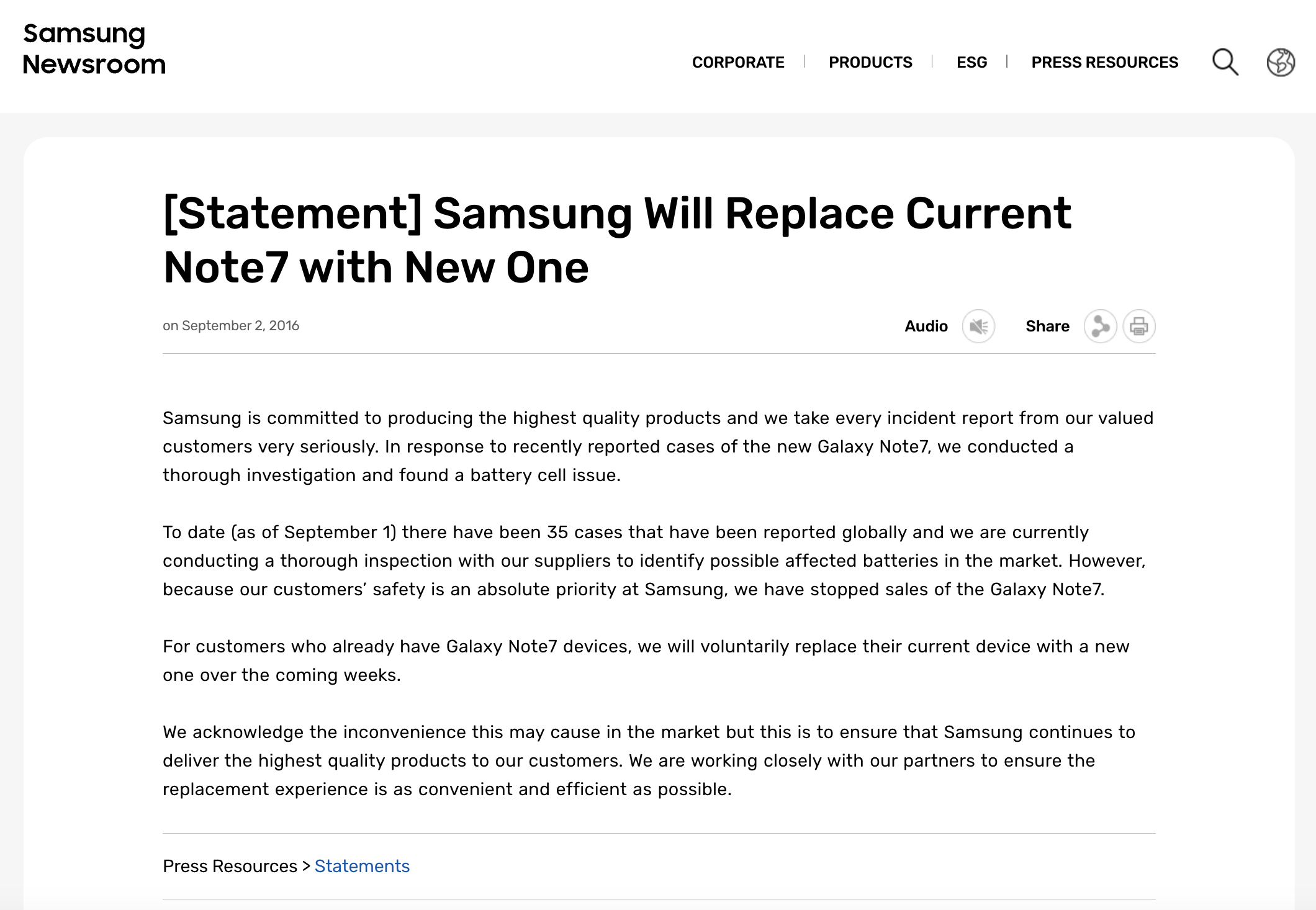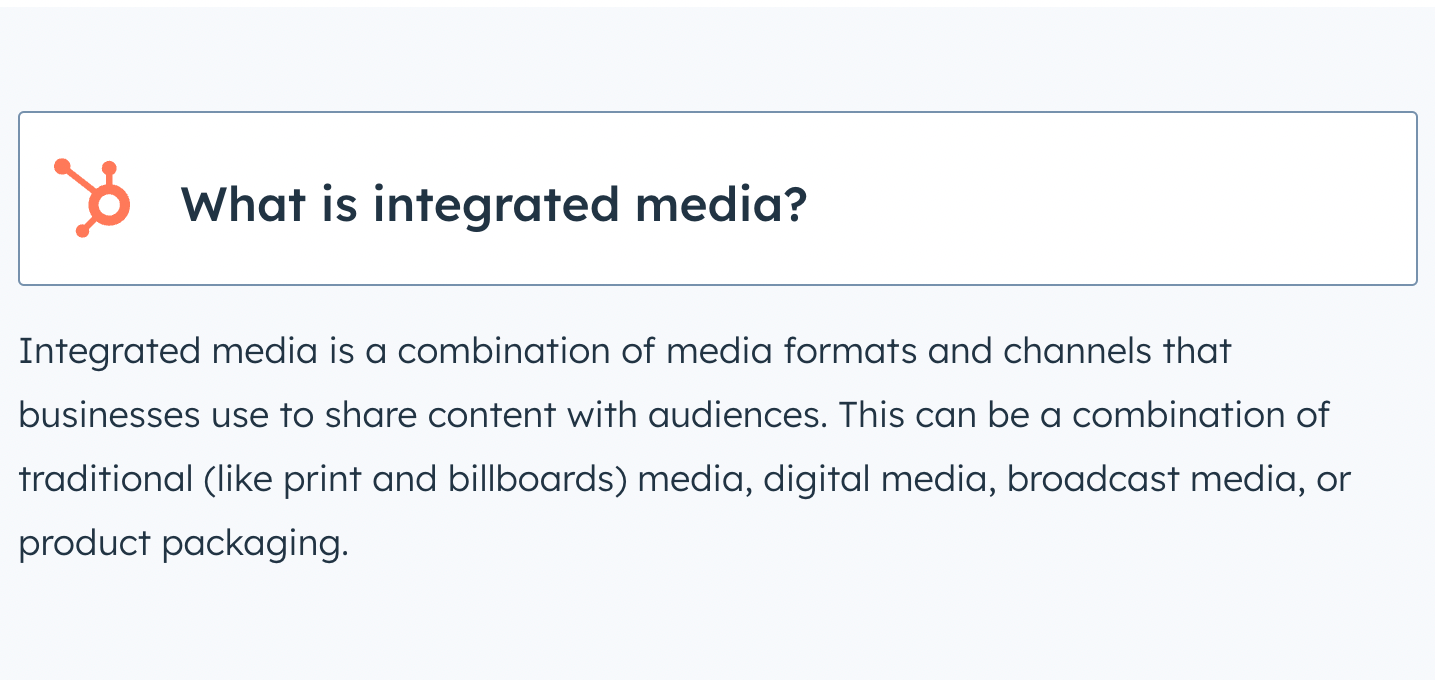Disruptive storms loom over your business. Imagine standing on a hilltop, watching these storm clouds. They’re not just full of rain, but deluges of data and information threatening to flood your business landscape. What you need is Integrated Media Intelligence to provide data and insights to help you make better decisions.
Every single day, an unfathomable 2.5 quintillion bytes of data are created – that’s around 530,000 Libraries of Congress chucked into the mix daily. The question we’re left staring at – how can your business navigate and harness such an overwhelming storm to sail ahead of the competition?
Welcome to the era of integrated media intelligence. And no, it’s not just another buzzword to toss around in board meetings. This game-changer can decipher these vast pools of data, transform them into actionable insights, and drive strategic decision-making for your business. Buckle up, as we bring you on an enlightening journey complete with intriguing case studies. You’re about to discover why Media Intelligence is the compass your business never knew you needed.
Are you as ready as we are to weather the storm?
How Integrated Media Intelligence Transforms Your Business
- Comprehensive media monitoring provided by integrated media intelligence offers a broader perspective of media coverage.
- In-depth insight into competition and market trends via integrated media intelligence sets your business apart.
- A real-life case study showcasing its practical impact and benefits.
Step 1: Comprehensive Media Monitoring
Integrated media intelligence does not merely offer a cursory glance at the media landscape. Instead, it provides a panoramic and cohesive view of media coverage spread across numerous channels, thereby offering you a perspective that isn’t just limited but also encompassing. This holistic perspective enables you to understand the full breadth of conversation about your:
- Brand
- Competitors
- Industry
By offering real-time media monitoring, integrated media intelligence is a game-changer for businesses. Its benefits are manifold and far-reaching.
First and foremost, it enables businesses to tap into the real-time dialogue happening around their brand, helping them react promptly to either negative or positive sentiment. This allows companies to stay ahead of potential crises and capitalize on positive momentum.
Furthermore, real-time monitoring furnishes businesses with immediate insights into their campaigns, enabling them to tweak and improve their strategies in real-time.

Evaluating the Effectiveness of Integrated Media Intelligence (IMI): Key Metrics
In evaluating the effectiveness of integrated media intelligence (IMI), several specific metrics are pivotal. These are essential for a comprehensive understanding of media presence and strategy performance. Each metric offers unique insights, helping businesses optimize their media strategies and enhance audience engagement.
Here are the specific metrics involved in integrated media intelligence listed out for you:
- Engagement Rate: Measures interactions such as likes, shares, and comments relative to total reach or number of followers.
- Audience Growth Rate: Tracks the increase in followers or subscribers over a specific period.
- Sentiment Analysis Score: Evaluates whether mentions are positive, negative, or neutral.
- Conversion Rate: Percentage of users who take a desired action after interacting with your content.
- Reach: The total number of unique users who have seen your content.
- Impressions: The number of times your content is displayed, regardless of clicks.
- Share of Voice: The brand’s market share in online conversations compared to competitors.
- Content Performance: Analysis of how different types of content perform based on engagement metrics.
- Click-Through Rate (CTR): The percentage of people who click on a link out of the total who view it.
- Media Exposure: The extent of media coverage or mention a brand or campaign receives.
Step 2: In-Depth Competitive Intelligence
Comprehending market trends and competitors’ strategies is a formidable task, given the dynamic, rapidly evolving business environment. It’s a task made remarkably simpler with integrated media intelligence.
This technology solution delves into the crux of your competition’s moves, strategies, and their market impact, delivering these insights right at your fingertips. This facilitates smarter, quicker, and more informed business decisions.
Real-World Case Study: Starbucks and Social Listening
Background: Starbucks, the global coffeehouse chain, is well-known for its emphasis on customer experience and innovation. To maintain its market leadership, Starbucks leverages integrated media intelligence, with a particular focus on social listening and real-time media monitoring.
Challenge: In the mid-2000s, Starbucks faced growing criticism on social media regarding the quality of its products and customer service. This negative sentiment, if left unaddressed, threatened to tarnish the brand’s reputation and impact sales.
Solution: Starbucks initiated a comprehensive media monitoring strategy using integrated media intelligence tools. They began tracking and analyzing mentions of their brand across various media platforms, including social media, blogs, and news sites. This allowed them to gain a holistic view of public sentiment and identify common complaints and areas for improvement.
Implementation: One significant finding was customers’ desire for more beverage customization options. Starbucks responded by introducing the “My Starbucks Idea” platform, inviting customers to submit suggestions for products, services, and policies. This initiative was heavily promoted across social media channels, and the company committed to reviewing and implementing feasible customer ideas.
Results: The “My Starbucks Idea” campaign was a resounding success. It not only improved customer engagement and satisfaction but also resulted in numerous successful product innovations, such as the introduction of Pumpkin Spice Latte and free Wi-Fi in stores. By effectively utilizing integrated media intelligence, Starbucks turned potential negative publicity into an opportunity for brand enhancement and customer-driven innovation.
Impact on Marketing Strategy: The success of this approach led Starbucks to further integrate media intelligence into its marketing strategy. The brand continued to monitor media channels for real-time insights, adapting its offerings and campaigns to meet evolving customer needs and preferences. This proactive stance helped Starbucks maintain its position as a leader in the coffee industry, demonstrating the power of integrated media intelligence in transforming business strategies.
This case study showcases how integrated media intelligence, particularly through social listening and real-time monitoring, can directly influence product development, customer engagement, and overall marketing strategies, leading to tangible business improvements and sustained market success.

Enhancing Decision Making with Social Media Analytics
- Understand the functionality of social media analytics
- Grasp how it helps in analyzing customer sentiment and trends.
- Learn from a real case study about its practical application.
The Role of Social Media Analytics in Decision Making
Social media analytics are critical for extracting and evaluating data from various social media platforms. It converts social interactions initiated by businesses into valuable insights. These insights can further assist in making sound business decisions.
Social media analytics tools monitor:
- Active conversations
- Comments
- Shared content
- Follower demographics
The captured data then translates into insightful metrics such as engagement rate, audience growth rate, and social share of voice.
Now, here’s a curated list of social media analytics tools that can help monitor these metrics. I personally LOVE using Google Analytics (I use it daily).
- Hootsuite: Allows monitoring of multiple social media platforms in one dashboard, tracks engagement, and analyzes social media traffic.
- Sprout Social: Offers comprehensive analytics, including detailed reports on engagement, audience growth, and competitor comparison.
- Buffer Analyze: Provides analytics on post performance, audience demographics, and engagement rates.
- Google Analytics: Can track social media referrals to a website and conversions from social media channels.
- Brandwatch: Offers deep social listening and analytics capabilities, sentiment analysis, and demographic information.
- BuzzSumo: Focuses on content analysis and social share of voice, identifying key influencers and trending topics.
- Keyhole: Specializes in hashtag analytics and tracking, engagement, and sentiment analysis.
- Mention: Monitors brand mentions across the web and social media, providing insights into brand presence and audience conversations.
- Socialbakers: Uses AI to analyze audience behavior, benchmark performance against competitors, and track engagement.
- Iconosquare: Specifically designed for Instagram and Facebook analytics, tracking follower growth, engagement, and content performance.
These tools can help businesses gather valuable data for informed decision-making. If you’re currently using nothing, get started with at least one tool on this list and build from there.

Understanding Customer Sentiment and Trends with Social Media Analytics
Understanding what customers think about a product, service, or brand is made simpler with social media analytics. Sentiment analysis, one of its features, is the automated process of identifying and categorizing the sentiment expressed in a piece of text. It helps to understand whether the customer sentiment towards a brand or product is positive, negative, or neutral.
Tracking consumer trends is equally essential for well-informed decision making. By analyzing the peaks in conversations around specific topics or brands, businesses can spot emerging trends. With these insights, businesses may:
- Create engaging content
- Launch targeted marketing campaigns
- Introduce new products that align with the trends
The Power of Media Data Analysis
- Unveils the essential role of data analysis in media intelligence
- Reveals how patterns, trends, and informed decisions emerge from this process
- Delivers first-hand evidence with an insightful case study
Role of Data Analysis in Integrated Media Intelligence
Data analysis stands at the core of integrated media intelligence. In an era where vast quantities of data are generated each day, plenty of vital insights lay hidden beneath the surface.
Media intelligence harnesses this potential by sifting through the noise to present actionable insights. It streamlines your decision-making process and helps you to understand the value of your business data beyond the numbers.
Identifying Patterns, Predicting Trends, and Making Decisions
Data analysis is instrumental in extracting patterns and trends that otherwise might go unnoticed. By analyzing broad datasets, businesses not only get a snapshot of their current state, but also, predictive views of future prospects.
Making strategic decisions based on reliable data helps reduce risk and uncertainty. This forward-looking approach enables businesses to plan better, increase efficiencies, and stay ahead in the competition.
With this data-driven approach, businesses can:
- Anticipate customer behaviors
- Predict market changes
- React proactively to the dynamics of the marketplace
Real-World Examples: Samsung and Media Data Analysis
Considering the theory and advantages of media data analysis is one thing, but actual applications of it in the real world allow for a clearer understanding. For instance, Samsung.
Background: Samsung, a leading global technology company, is known for its innovation and quality products. However, like any large corporation, it is not immune to challenges. Samsung faced a significant crisis when reports surfaced about faulty batteries in their Galaxy Note 7 smartphones, leading to overheating and fires.
Challenge: The crisis posed a threat to Samsung’s brand reputation and customer trust. It was crucial for the company to manage the situation effectively to mitigate brand damage and ensure consumer safety.
Solution: Samsung implemented integrated media intelligence strategies, utilizing real-time media monitoring tools. This approach allowed the company to track, compile, and analyze thousands of news stories and social media posts worldwide related to the Galaxy Note 7 incident.
Implementation: By employing data analysis techniques, Samsung could identify the spread of the crisis, understand public sentiment, and track the effectiveness of their communications. This comprehensive media intelligence enabled them to craft targeted response strategies, addressing customer concerns and outlining steps for rectification.
Results: Through effective media data analysis and prompt action, Samsung managed to minimize the negative impact on their brand. They conducted a global recall of the Galaxy Note 7, communicated transparently with consumers, and implemented stringent quality checks to prevent future incidents. This response helped to restore consumer confidence and demonstrated Samsung’s commitment to customer safety.
Impact on Crisis Management Strategy: The incident underscored the importance of media data analysis in crisis situations. Samsung’s experience shows how integrated media intelligence can inform timely and effective decision-making, turning a potential disaster into an opportunity to reaffirm brand values and customer commitment.
Samsung’s proactive and informed response set a benchmark in crisis management and highlighted the critical role of integrated media intelligence in modern business practices.

Building an Integrated Media Strategy
- Successful media strategies need integration for optimal results.
- Integrated media intelligence assists in crafting and implementing these strategies.
- Illustrating this with a real-world case study.
Digital space is dynamic, with diverse channels and formats, and customers spread across them. The necessity for an integrated media strategy isn’t a luxury; it has become a prerequisite.
The Necessity for an Integrated Media Strategy
In an era where your audience is scattered across various platforms, it is paramount that our messages reach them thoughtfully and effectively. Long gone are the days of unidirectional communication; modern customers demand interaction. An integrated media strategy synchronizes your communication across multiple channels, delivering a seamless user experience. In doing so, it enhances brand recall and drives engagement.
The necessity of an integrated media strategy is underscored by the evolving landscape of media consumption and communication. In today’s market, leveraging various platforms for a unified messaging approach is essential due to the fragmented nature of consumer attention across different media channels. integrated media planning becomes crucial as it ensures consistent and cohesive messaging across various channels, enhancing brand recall and driving engagement.
It also facilitates reaching diverse audience segments through different media formats such as:
- Display images
- Audio content
- Video content
- Paid social media
- Blogs
- Newsletters
As indicated in the insights shared by Pathlabs. They emphasize the importance of reaching consumers at optimal moments across different channels to extend a campaign’s reach, detailed in their discussion on integrated media planning and execution.
According to HubSpot, integrated media strategies are central to contemporary marketing efforts, enabling businesses to reach their target audience segments across various channels. This approach ensures that different audience segments can encounter a brand’s ads, likely across multiple channels, enhancing the consistency and cohesiveness of the brand’s message. An integrated media planner is crucial in aligning the marketing strategy with business goals by making decisions based on:
- Buyer personas
- Competitor analysis
- Social listening
Adopting an integrated media strategy allows for a synchronized communication approach across multiple channels, catering to the modern customer’s expectations for interaction and engagement. This strategy not only enhances brand recall but also drives significant engagement, ultimately influencing the consumer’s purchasing decisions.

Integrated Media Intelligence: Your Tactical Advantage
Integrated media intelligence is the key participant for planning and executing your media strategy. It gives you a 360-degree overview of your brand’s performance across marketing platforms. With data by your side, you can deter guesswork and make holistic, informed decisions based on concrete metrics.
“Integrated media is a digital marketing strategy utilizing two or more media formats to reach multiple target audience segments… it’s important to integrate multiple types of media into a marketing strategy because it increases the chances of reaching a consumer at the optimal moment”
Pathlabs
It reveals trends and patterns, augmenting your understanding of audience interaction. By pinpointing what content resonates with them, you can finely tune your future campaigns for maximum impact. It’s like having a roadmap that assists in deciphering the complex media landscape and guiding your brand towards success.
A True Navigator in the Media Maze
Leveraging integrated media intelligence enables you to smartly invest your time and resources. By revealing the underperforming platforms, you can recalibrate your efforts towards those showing promising results. And as the marketing landscape evolves, it equips you to nimbly adapt and sustain your competitive edge.
“Media intelligence allows you to measure the impact of your news, public, and social content by providing a clear picture of where your organization stands in the vast media landscape”
LexisNexis
A Real Case Study Illustration
To demonstrate the power of an integrated media strategy powered by media intelligence, consider the case study of a company I have insider knowledge of, but who must remain anonymous. The brand’s marketing team used integrated media intelligence to gather insights about their performance across different digital channels. The intelligence showed that they were underperforming in email marketing while, their social media engagement soared.
In response, they recalibrated their strategy, investing more resources in expanding their social media presence while refining their email marketing strategy. As a result, they experienced substantial enhancements in overall engagement and conversions, demonstrating the significant benefits of using integrated media intelligence to inform strategy.
For a real-world illustration of the impact of an integrated media strategy powered by media intelligence, let’s look at the case of Emirates and Wells Fargo, as they provide clear examples of how diverse and comprehensive approaches can lead to substantial business outcomes.
A Real Case Study: Emirates
Background: Emirates, starting with two leased aircraft in 1985, has grown into a major global airline with a significant international presence.
Strategy and Implementation: Emirates adopted an integrated marketing communication approach, combining traditional media like TV commercials and print ads with sponsorships of major sports events and digital platforms. They aimed to highlight their services’ quality across all media channels.
Results: The strategy enhanced Emirates’ global brand visibility and appeal, contributing to its reputation as a high-quality service provider in the airline industry.
Impact: The integrated approach allowed Emirates to reach a broad audience, reinforcing its message of quality and luxury in air travel.

A Real Case Study: Wells Fargo
Background: Faced with scandals, Wells Fargo needed to regain customer trust and revitalize its image.
Strategy and Implementation: The company launched an integrated marketing campaign focusing on transparency and customer security, utilizing print, broadcast, online, and mobile channels to communicate its new initiatives and customer-centric services.
Results: The campaign helped Wells Fargo improve its public perception by highlighting changes and customer-focused services, demonstrating the effectiveness of a unified marketing strategy in addressing brand challenges.
Impact: The approach taken by Wells Fargo showcases how integrated media strategies can be pivotal in crisis management and brand recovery, providing a template for other companies facing similar challenges.
There’s no denying the magnitude of benefits an integrated media strategy offers, especially when powered by media intelligence. By deciphering the complex media landscape and harnessing the power of data, it equips your business to thrive in the digital age.
These case studies demonstrate the tangible benefits of using integrated media intelligence to inform strategy, from enhancing brand visibility and reputation to effectively managing and recovering from crises. By using a mix of traditional and digital channels, both Emirates and Wells Fargo were able to reach their target audiences more effectively and achieve their strategic objectives.
Integrated Media Intelligence Supplementary Information
A deeper look lets any business unlock the full potential of integrated media intelligence (IMI). Key insights include:
- Understanding IMI and its components
- Importance of IMI in business
- Steps for implementing IMI in your business
- Challenges faced during implementation
- Future of IMI in businesses
What is Integrated Media Intelligence?
Integrated media intelligence (IMI), a significant evolution from traditional monitoring tools, signifies a comprehensive suite that gathers, analyses, and presents data from diverse media channels. It includes several components varying from media monitoring and analysis to social listening and media measurement, all unified under one framework.
IMI experienced impressive evolution in recent years. Traditional methods only scratched the surface with a focus on how much media coverage was received. However, IMI dives deeper, scrutinizing the quality of coverage, engagement factors, and audience sentiment. This shift in focus allows businesses to have a holistic media perspective, aligning their strategies and goals effectively.
Integrated media intelligence (IMI) represents a significant advancement in media monitoring and analysis. Unlike traditional media monitoring, which primarily focuses on the volume of media coverage, IMI provides a comprehensive suite that spans various components. These include:
- Media Monitoring: The continuous tracking of media channels to gather relevant content about a specific topic, brand, or industry. IMI systems track both traditional outlets like newspapers and television, and digital platforms such as blogs and social media.
- Media Analysis: The evaluation of media content to extract meaningful insights. This goes beyond counting mentions to include the analysis of sentiment, tone, and contextual relevance, providing a deeper understanding of public perception and media impact.
- Social Listening: The process of monitoring social media channels for mentions of your brand, competitors, products, and more. This allows companies to hear and analyze conversations about their brand in real time, offering immediate insights into consumer sentiment and market trends.
- Media Measurement: The quantification of media exposure and its impact. This involves metrics such as reach, frequency, engagement, and conversion rates, allowing for the assessment of the effectiveness of communication strategies.
The evolution of IMI from traditional methods signifies a shift towards more nuanced, actionable insights. Instead of merely assessing how much coverage a business receives, IMI delves into the quality of this coverage, the engagement it drives, and the sentiments of the audience involved.
By integrating data from different media sources, IMI offers a holistic view of a brand’s media presence, allowing businesses to align their media strategies and objectives more effectively. This comprehensive approach helps businesses to not just track their media exposure, but also to understand the impact of their communications across different channels and audience segments.
Real-world applications of IMI have demonstrated its ability to transform business strategies. Companies leveraging IMI can make informed decisions based on data-driven insights, tailor their messaging to resonate more effectively with their target audiences, and ultimately, achieve a more robust and cohesive media presence.
In essence, Integrated Media Intelligence equips businesses with the tools to navigate the complex media landscape efficiently, ensuring that their communications strategies are informed, targeted, and effective in reaching their desired objectives.
Why is Integrated Media Intelligence Important?
Integrated media intelligence is a cornerstone of any successful business strategy. It delivers numerous benefits, ranging from better market understanding to preempting crisis situations.
Tracking performance metrics helps in discerning audience sentiment, gauging market position, and analyzing competitors to refine marketing strategies. A well-executed IMI system contributes significantly to a company’s growth and competitiveness.
For Detailing Specific Metrics, consider key performance indicators like engagement rate, audience growth rate, sentiment analysis scores, and conversion rates. Pre-IMI implementation, these metrics might show lower engagement, slower audience growth, mixed sentiments, and lower conversion rates. Here’s an example:
| Metric | Pre-IMI Implementation | Post-IMI Implementation |
|---|---|---|
| Engagement Rate | X% | Y% (Increased by Z%) |
| Audience Growth Rate | X% | Y% (Increased by Z%) |
| Sentiment Analysis Score | X (Neutral/Negative) | Y (Positive) |
| Conversion Rate | X% | Y% (Increased by Z%) |
Including specific performance metrics or KPIs before and after IMI implementation could offer clearer insights into its impact.
You can use a table like this to track and demonstrate the improvements brought by implementing Integrated Media Intelligence, showing tangible benefits and making the case study insights more digestible.
How to Implement Integrated Media Intelligence in Your Business
Implementing IMI is a strategic process that involves several careful steps. The initial phase involve the selection of a reliable IMI partner, evaluating their toolkits and capabilities. The next steps encompass integrating IMI solutions with existing business systems, and training employees to use the systems effectively. Good practices demand regularly monitoring and updating the system to address evolving business needs.
To better understand how integrated media intelligence (IMI) can be implemented and the impact it can have, let’s look at a successful case study and outline the steps for incorporating IMI into your business.
Steps to Implement Integrated Media Intelligence in Your Business:
- Select an IMI Partner: Evaluate potential IMI vendors based on their capabilities, data sources, and analytics features. Ensure they offer comprehensive media monitoring across both traditional and digital channels.
- Integrate IMI Solutions: Seamlessly integrate the chosen IMI tools with your existing business systems, such as customer relationship management (CRM) and marketing platforms, to enable cohesive data analysis.
- Train Your Team: Provide training sessions for your employees to familiarize them with the IMI tools. Focus on interpreting data, generating reports, and applying insights to strategic planning.
- Set Clear Objectives: Define specific goals for your IMI efforts, such as improving brand sentiment, increasing engagement, or tracking competitor activity. This will guide your media monitoring and analysis activities.
- Monitor and Evaluate: Regularly review the insights generated by your IMI tools. Look for patterns, trends, and anomalies in media coverage, audience engagement, and sentiment.
- Act on Insights: Use the insights gained from IMI to inform your marketing strategies, content creation, and customer engagement initiatives. Be prepared to adapt your tactics based on new data and evolving market conditions.
- Review and Refine: Continuously assess the effectiveness of your IMI strategy. Make adjustments to your processes and tools as needed to ensure they remain aligned with your business objectives and media landscape changes.
Implementing integrated media intelligence is an ongoing process that requires commitment and adaptability. By following these steps, your business can leverage IMI to make data-driven decisions, enhance customer experiences, and stay competitive in the ever-evolving media landscape.
Challenges in Implementing Integrated Media Intelligence
Regardless of its obvious benefits, implementing IMI can be challenging. The common hurdles include:
- Inadequate data
- Lack of professional expertise
- Integrating IT systems
However, overcoming these problems is possible with a clear IMI strategy. Businesses can leverage consultations with experts, use of comprehensive media intelligence solutions, and employee training to ensure a smoother IMI implementation.
Future of Integrated Media Intelligence
The future of integrated media intelligence promises revolutionary trends. Extracting profound insights from vast and varied data remains the primary objective, but the emphasis on predictive analysis and using AI for in-depth comprehension and automation will gain momentum.
Preparing for these changes requires an open approach to new technologies and a commitment to continuously update skills and approaches. Adapting to these trends will help businesses to remain at the forefront of market intelligence and maintain their competitive edge.
Integrated Media Intelligence FAQs
Q: what is integrated media Intelligence (IMI)?
A: IMI is a comprehensive suite that collects, analyzes, and presents data from various media channels, including traditional and digital platforms.
Q: Why is IMI important for businesses?
A: IMI provides insights into media coverage, audience sentiment, and competitive landscape, helping businesses make informed decisions.
Q: What are the key metrics of IMI?
A: Important metrics include Engagement Rate, Audience Growth Rate, Sentiment Analysis, Conversion Rate, Reach, Impressions, Share of Voice, Content Performance, Click-Through Rate, and Media Exposure. Here’s a re-cap:
- Engagement Rate & Audience Growth Rate: Tracks audience interaction and follower increase, highlighting content reach and community growth.
- Sentiment Analysis Score & Conversion Rate: Assesses public sentiment from mentions and measures the percentage of desired actions taken, indicating content impact and effectiveness.
- Reach & Impressions: Evaluates the extent of content visibility, indicating the scale of potential audience engagement.
- Share of Voice & content performance: Compares brand presence against competitors and analyzes different content types for strategic adjustments.
- Click-Through Rate (CTR) & Media Exposure: Determines engagement depth via link clicks and assesses brand coverage breadth across media platforms.
Q: How can businesses implement IMI?
A: Steps include selecting an IMI partner, integrating IMI solutions, training employees, setting objectives, monitoring insights, acting on insights, and continuously refining strategies.
Q: What challenges might businesses face when implementing IMI?
A: Common challenges include dealing with inadequate data, lack of professional expertise, and integrating new systems with existing IT infrastructure.
Q: What future trends are expected in IMI?
A: Future trends include more predictive analysis, the integration of AI for deeper insights, and automation of complex media intelligence tasks.
Q: How has Starbucks utilized IMI?
A: Starbucks used IMI for social listening and real-time monitoring to improve product offerings and customer service based on customer feedback from their My Starbucks Idea platform.
Q: What benefits did Netflix see from using IMI?
A: Netflix leveraged IMI to understand audience sentiments, tailor content, and track its brand image, leading to improved customer engagement and brand presence.
Your Competitive Edge Awaits with Integrated Media Intelligence
Integrated media intelligence is a verified game-changer. Bringing together data, insights, and a comprehensive view of your customer behavior, it lets you stay one step ahead. Coupling it with real case studies further fortifies your decision-making process, amping up your market presence.
Why let this treasure trove remain untapped? A slight adjustment in your business approach could elevate your growth trajectory. A deep dive into the cutting-edge world of integrated media intelligence awaits, promising rich rewards.
Did any of the case studies resonate with you the most? Were you able to identify any parallels with your current business struggles or aspirations? Ponder upon these questions and empower your business with tailored strategies.
Finally, remember… “knowledge has a beginning but no end.” So, continue exploring integrated media intelligence and remain future-ready.
Stay successful. Stay informed.

